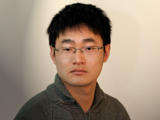Sala de vídeo 3.1.S08, Edificio Rey Pastor, planta -1 (sótano), Universidad Carlos III de Madrid, Avda. Universidad 30, 28911 Leganés - Madrid

Radio-frequency based wireless communications have revolutionized our society. Thanks to important wireless communication technologies such as Wi-Fi, LTE, and so on, people can enjoy high data rate and pervasive connections while surfing the Internet. However, new challenges are rising in today's wireless networks. Increasing capacity demands are requiring more bandwidth and various wireless radio technologies are exacerbating the spectrum problem. New technologies and paradigms are needed to meet these demands. This thesis investigates two technologies towards this direction: Visible Light Communication (VLC) and Device-to-Device (D2D) communication systems.
In VLC, transmitters modulate the light intensity of Light Emitting Diodes (LEDs) to send information. Receivers detect these light changes and decode them into data. Although more and more researchers are becoming interested in VLC, the lacking of an open-source platform for VLC research is preventing the fast evolution of VLC. To solve this problem, this thesis designs, implements, and evaluates the first open-source platform OpenVLC for embedded VLC research. Based on OpenVLC, this thesis proposes a new MAC protocol that enables the intra-frame bidirectional transmissions in networks of visible LEDs. Through this proposed method, the system's throughput can be greatly improved and the hidden-node problem can be strongly alleviated. Motivated by the envision of the Internet of lights, this thesis studies how to provide stable visible light links in VLC, designs and implements a new optical data link layer that is resilient to dynamic environments.
On the other hands, small cells are proposed and deployed in latest cellular networks to meet the increasing demands. As a result, the number of users served by each cell is decreasing. As the opportunistic gain increases as a concave function of active users, when dynamic traffic loads are considered, the opportunistic gain will be lost. To recoup the opportunistic gain, this thesis proposes a base-station transparent method based on D2D communication to dispatch traffic among devices. The results show this method can improve the average packet transfer delay greatly
Key words:
Visible Light Communication System, OpenVLC, Device-to-Device Communications, System Analysis, Implementation
About Qing Wang
Qing Wang received his bachelor's and master's degrees from the University of Electronic Science and Technology of China (UESTC), Chengdu, China, in 2008 and 2011, respectively. He received a second master's degree from the University Carlos III of Madrid, Spain, in 2012. He is currently a PhD student with the IMDEA Networks Institute as well as the University Carlos III of Madrid. He is supervised by Dr. Domenico Giustiniano. His research interests includes Visible Light Communication (VLC), Device-to-Device Communication, Opportunistic Scheduling, and Stochastic Optimization.
Personal site at IMDEA Networks
La defensa de tesis se realizará en inglés
 |
 |
 |
 |
- Tesis doctoral: Visible Light and Device-to-Device Communications: System Analysis and Implementation
- Publicaciones de IMDEA Networks: Tesis
- Estudiantes de doctorado en IMDEA Networks
- Red de Alumni
Supervisor de tesis: Prof. Dr. Domenico Giustiniano, Research Associate Professor, IMDEA Networks Institute
Universidad: Universidad Carlos III de Madrid
Programa de doctorado: Ingeniería Telemática

